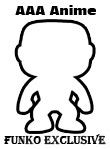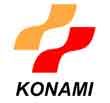Anime News
|
Otaku Culture Facts And Figures Date: 3/2/2005 |
|
Bitway Books has a small writeup on Otaku culture: Japan's Animation art style is spoken of very highly in foreign countries. Takashi Murakami's anime-style nymp art piece "Miss ko2" was auctioned at Christie's in New York for $567,500 in 2003. It was only projected to sell at about $300,000-$400,000. Likewise, a similar work by the artist, "Hiropon" was bought at a public sale for $430,000 dollars in May, 2002. Mr. Murakami toured foreign countries widely in the latter half of the 90's exhibiting his works. He used styles rangin from animation-based to original concepts like "Super-flat". Much of his success is due to the global rise of otaku culture. Elbe Shandes was director of the Cartier Modern Art Foundation which hosted Mr. Murakami's one-man show in Paris in October 2002. The progress Japanimation has made in the global scene in recent years is remarkable. The anime market in the United States in 2002 was estimated at $4,359,110,000 according to an estimate published by JETRO. It corresponds to about four times the exports of steel from Japan to the United States. Anime's big global push started in 1970's-80's. Anime saw an average of 30 hours+ broadcast time on French TV weekly, this greatly influenced France's protectionism cultural policy in the mid 90's. The Pokemon Phenomena in the USA did about 85 million dollars in business and was later marketed in 68 countries. In 2003, Hayao Miyazaki's film Spirited Away won an U.S. Academy Award in 2003 for best feature length animation. The market expansion Japan is experiencing through this foreign export of popular culture is welcome news for the Japanese economy which is still struggling. For instance, it is said that an economic effect of 2.3 trillion Yen globally can be accounted for when just considering the Pokemon character franchise. According to the ten year "Table of revenue and expenditure related to the culture" issued by Marubeni Corporation Economic Research Institute and compiled from customs statistics from 1992, exports related to cultural art such as films, books and art have increased in increments of 0.5 trillion Yen to 1.5 trillion Yen about 3 times. Total exports have increased from 43 trillion only to 52 trillion Yen and 1.2 times compared with this. This led the American journalist Douglas McGray to take play off the term GNP (gross national product) and coin the phrase GNC(Gross National Cool) refering to growing pop-cultural power of Japan. A thesis based on this idea was written by McGray in June, 2002 and submitted to the diplomatic technical journal, "Foreign Policy". This has given Japan great "Soft Power" (a theory created by Professor Joseph Nye of Harvard University). Soft Power infiltrates widely and deeply into other cultures and can exert influence on not only economy but even also the sense of values of another country. The USA has been a Soft Power giant for years on the world scene and now it seems Japan has joined it. In Japan itself Animation, Manga and Games are widely disregarded and recognition that the industry is an important expression is non-existant, the influence on the global scene widely disregarded. So cultivating new talent in the current age is increasingly difficult. Likewise South Korea is relied on as the main subcontractor of Japan's contents related grunt work. Seoul is said to have greater numbers of animators than Tokyo. To promote the animated cartoon industry, the Ministry of Economy, Trade and Industry has began several intiatives. |
| Source: Anime News Service |






















